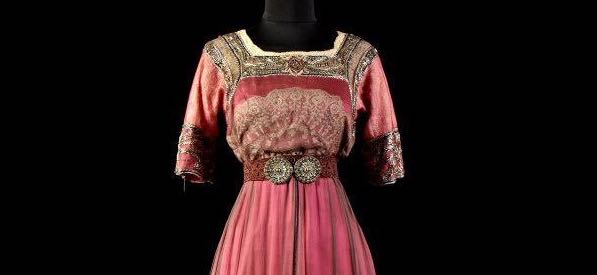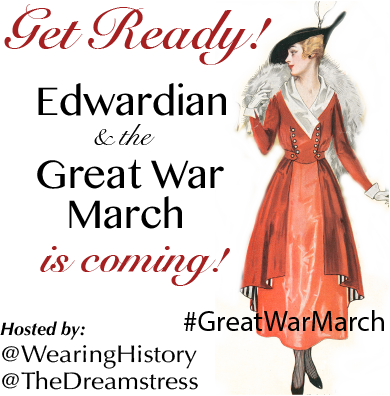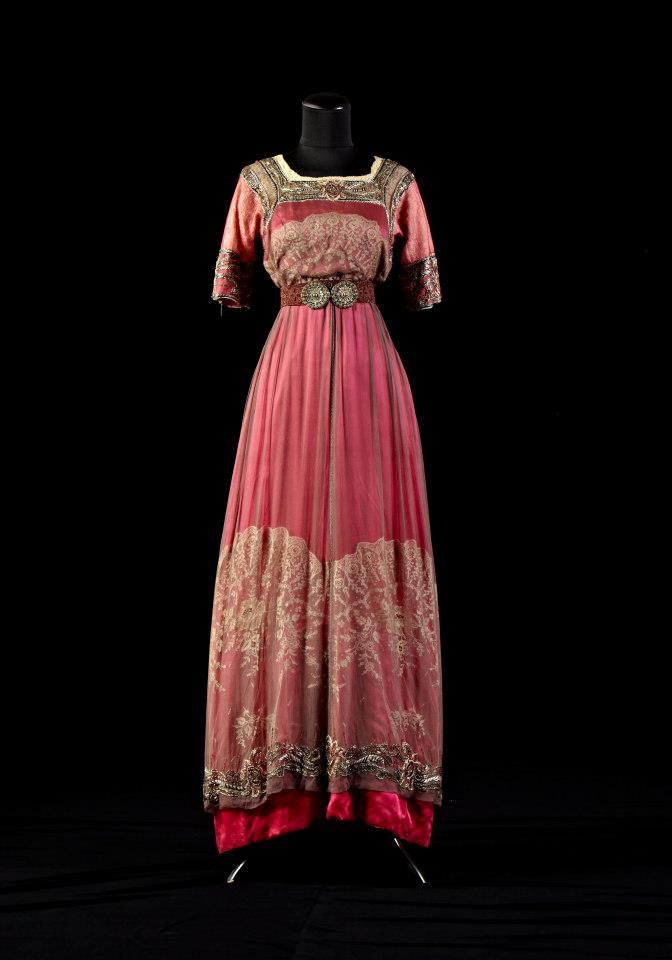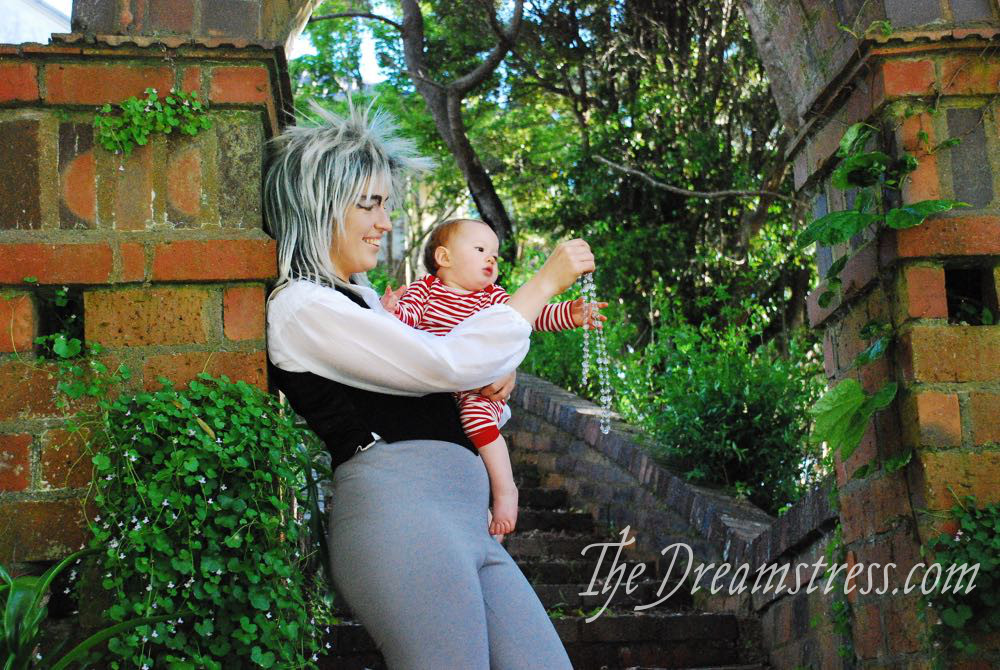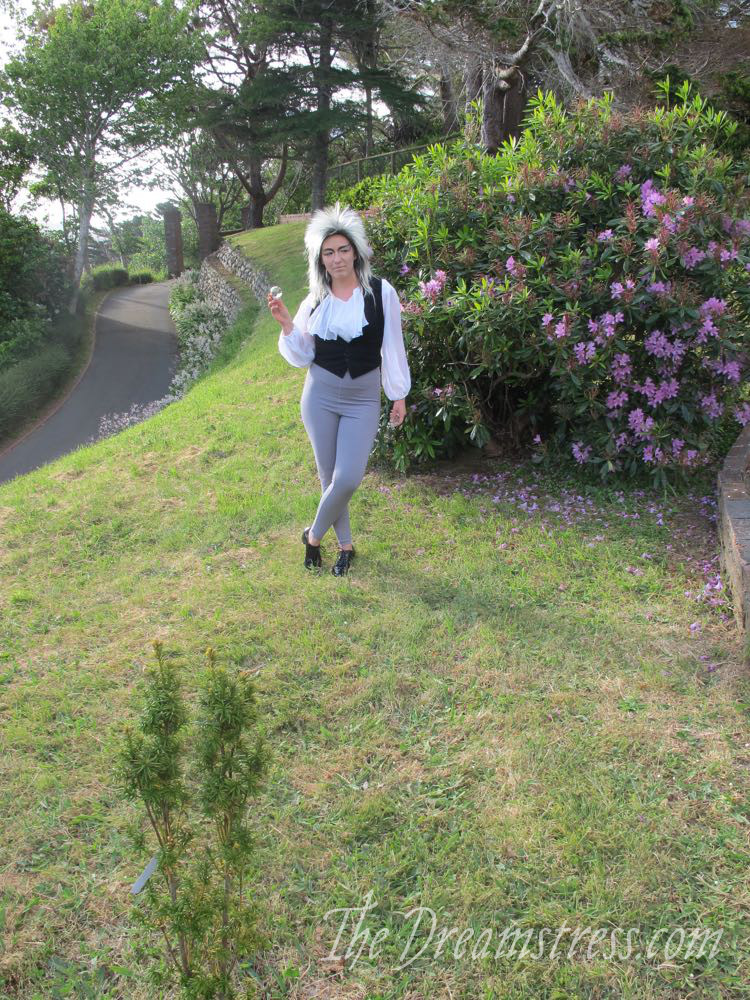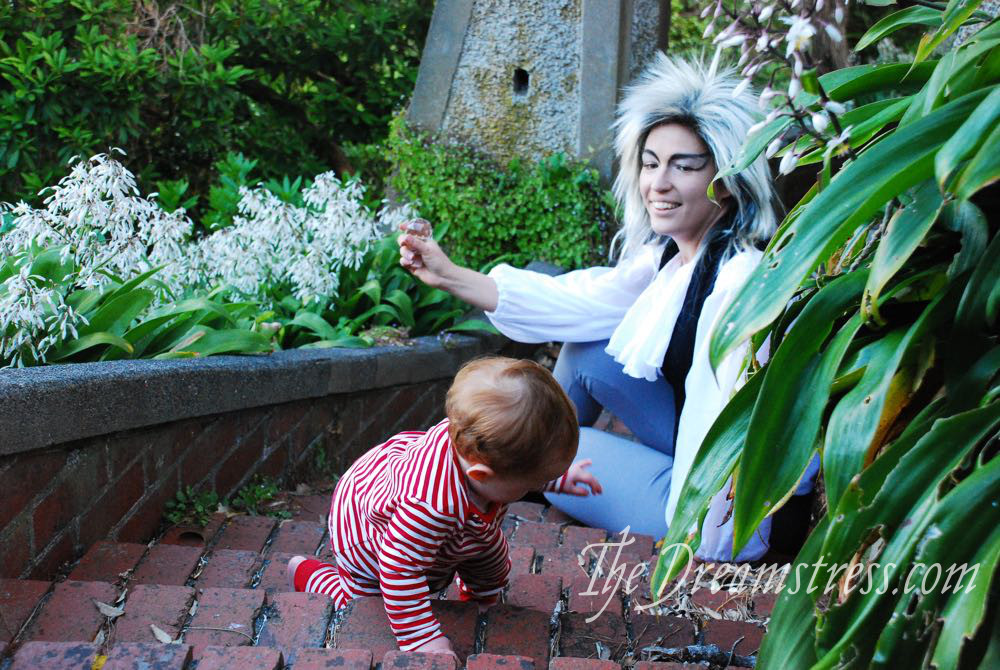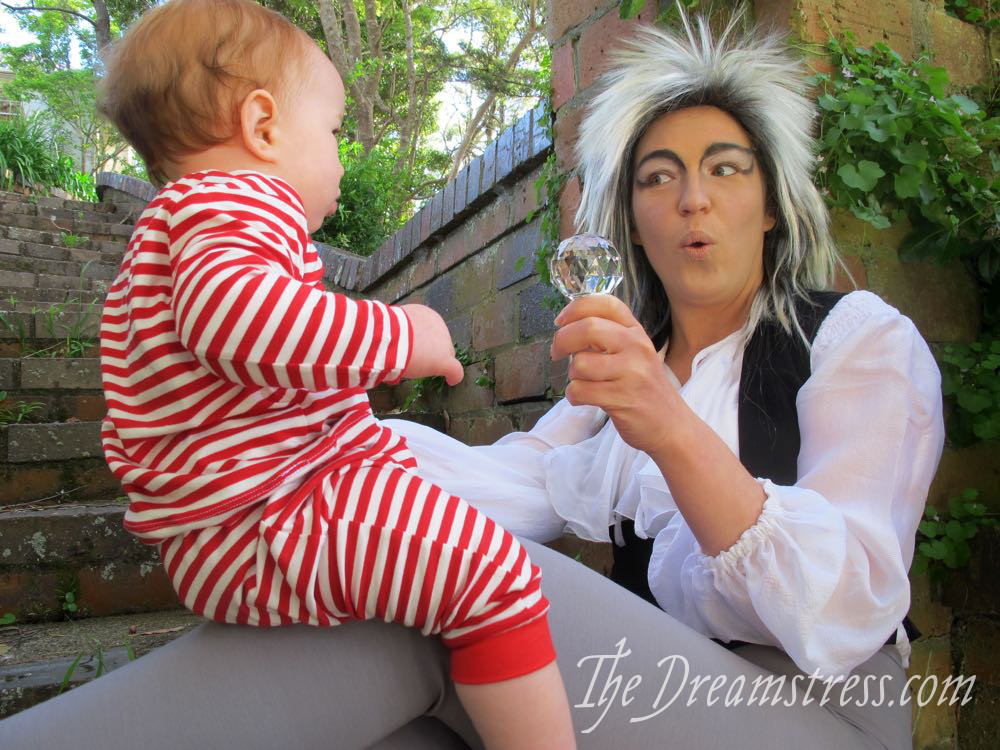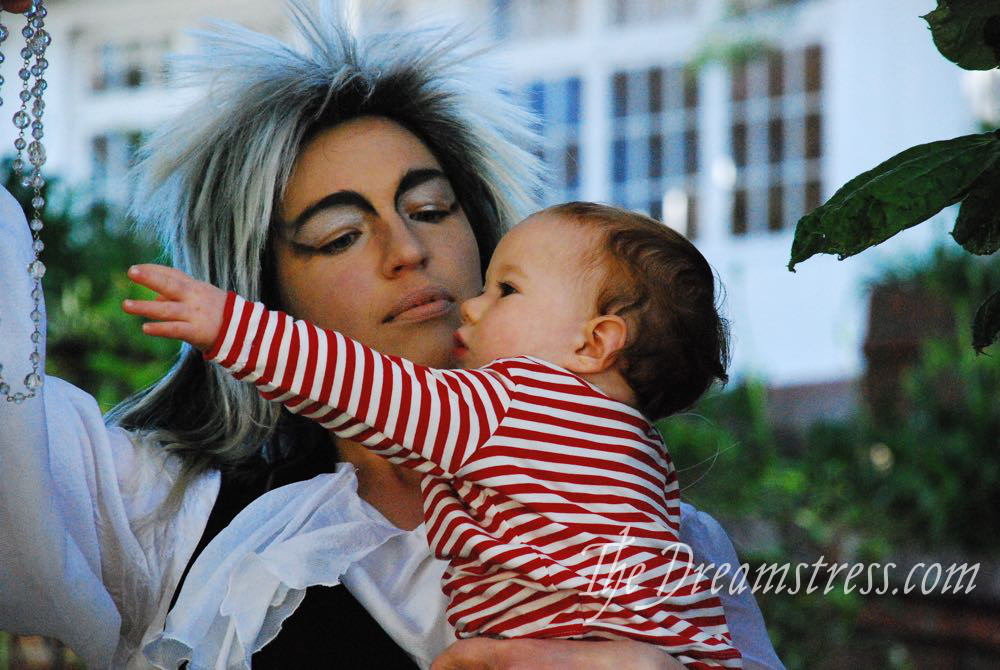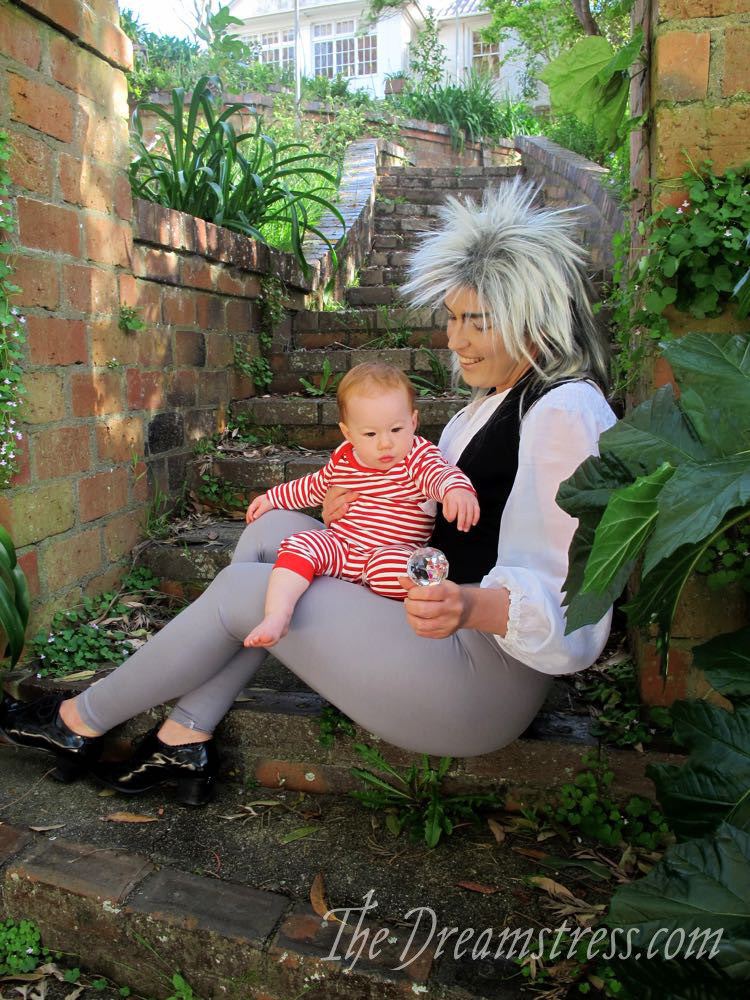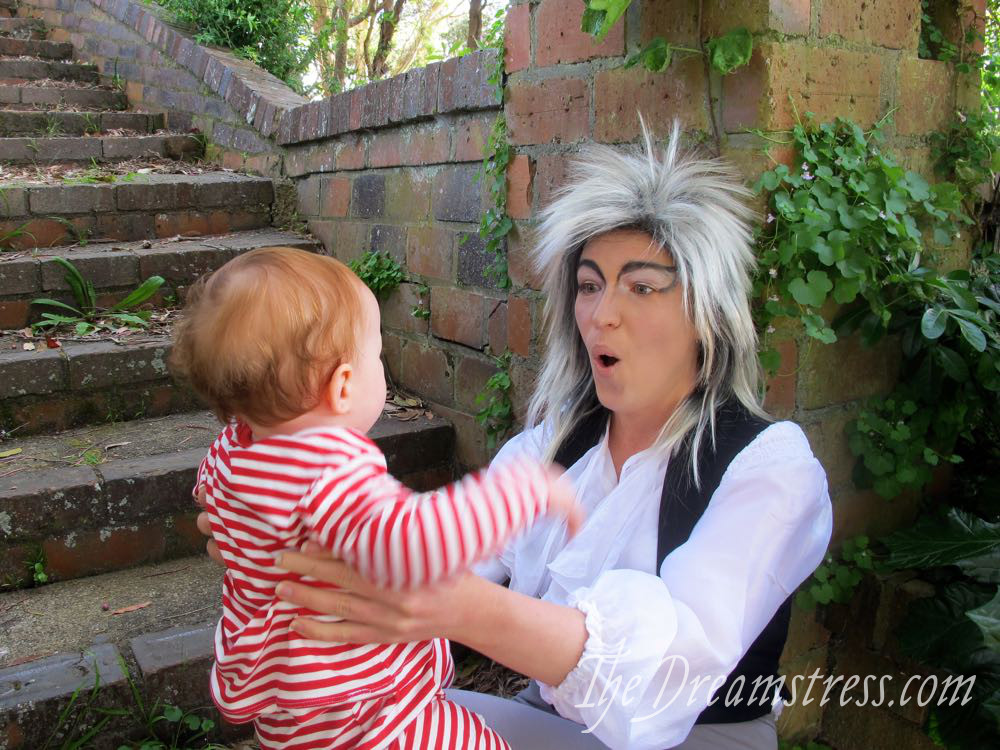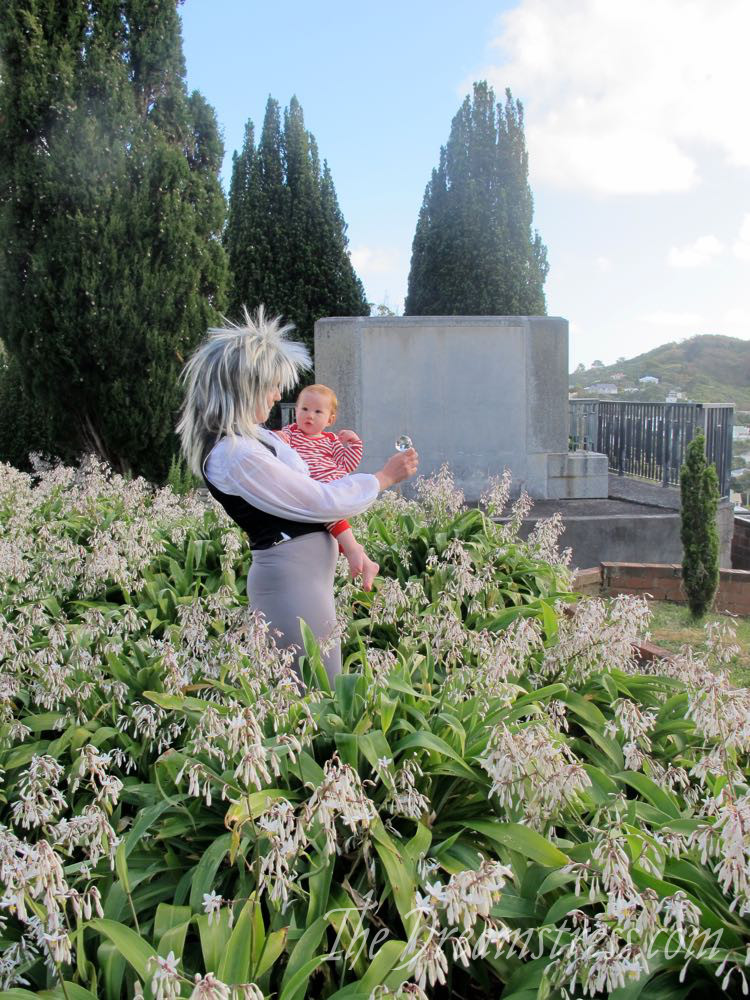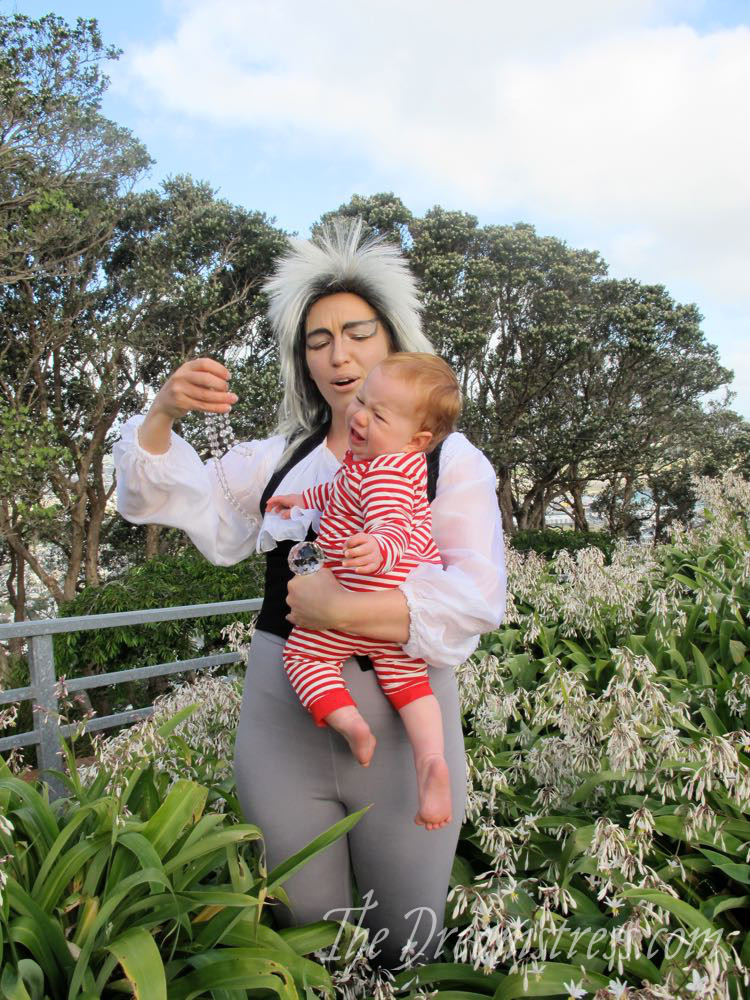Last October Redthreaded hosted ‘Fall for Costume’ on Instagram, with daily themes. One of them was ‘Pirates’, and I realised that I’d never dressed up as a pirate!
That was clearly an omission that must be rectified, so I threw a pirate picnic.
After all, what the point of being a costumer if you can’t let yourself go and be totally dorky every once in a while?
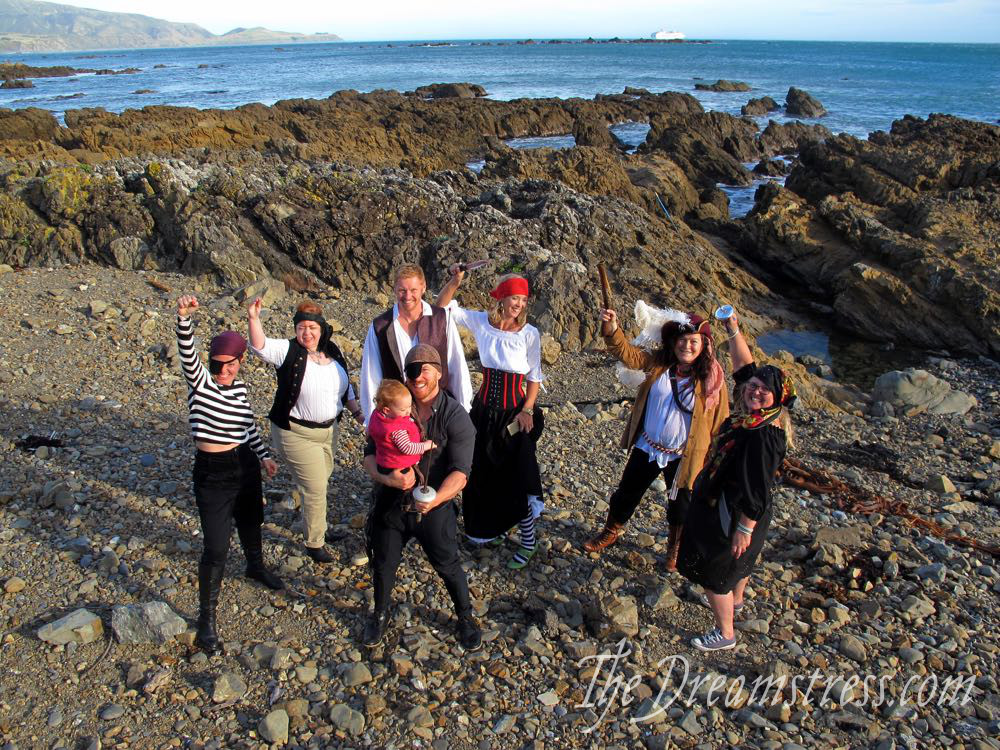
So I invited a bunch of friends willing to be dorky with me, and we all raided our wardrobes for striped shirts and big puffy white blouses, and boots and hats, and cutlasses and blunderbusses, and weighed anchor for the treasure coast.
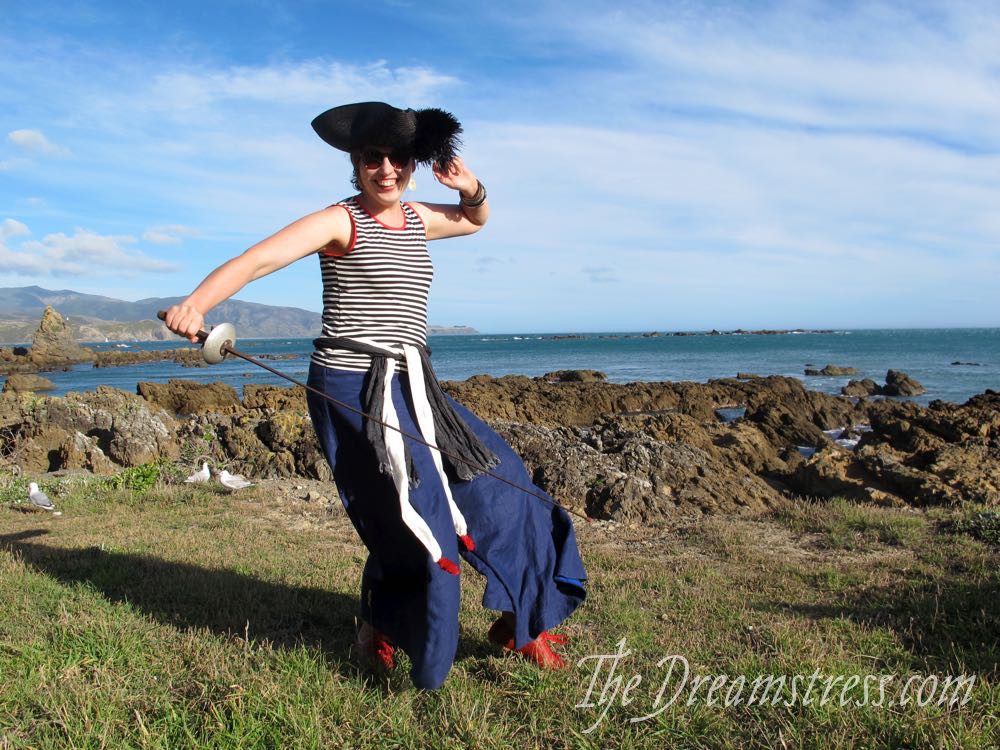
The location I picked is conveniently quite deserted, so that we could be blissfully undisturbed in our dorkiness. Because while I don’t mine being dorky, I like to do it as inconspicuously as possible!
Even more conveniently, it was relatively sheltered from the strong, blustery Northerly wind sweeping across Wellington that day.
The wind did a lovely job of fluttering our feathers and sweeping our sashes most artistically.
We did decide that most of the classic ‘pirate-y’ clothing – all those feathered tricorn hats and heeled boots, hoop earrings, and big shirts and trousers, are totally impractical for all the things you’d do as a pirate. The wind tried to blow our hats away, and tangled our sashes round our legs, and whipped our hooped earrings against our face. All most inconvenient!
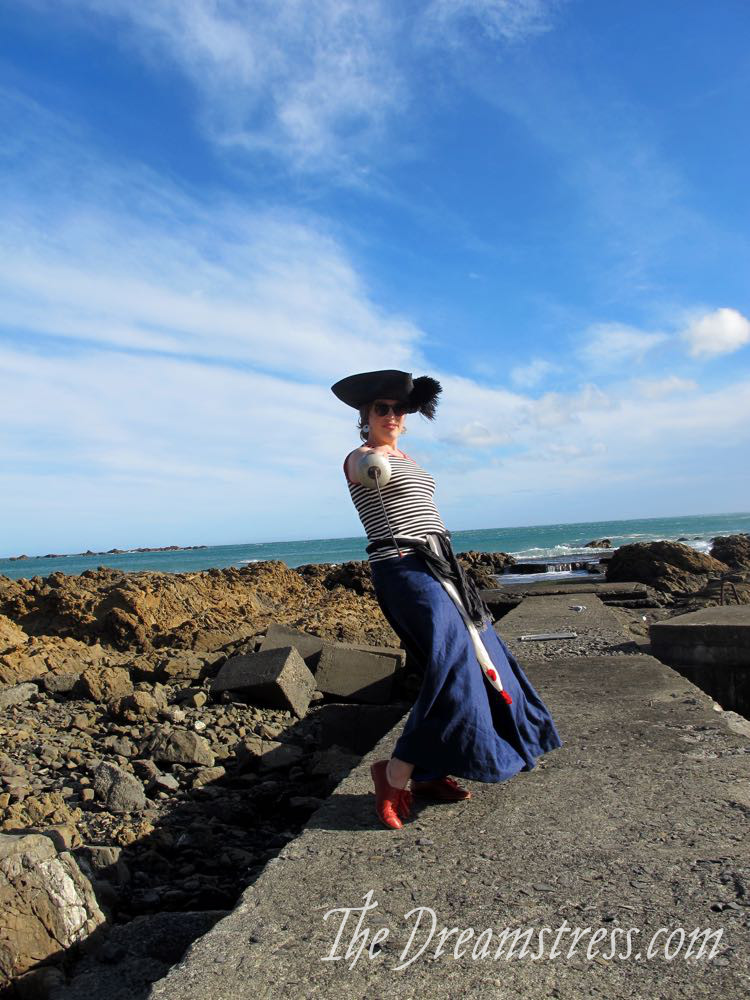
I’d meant to go for full 18th century lady-pirate, in stays and layers of petticoats, but was feeling sartorially lazy, so went 1930s-costume party pirate, with my Wearing History Chic Ahoy trousers, a striped singlet adapted from my personal T-shirt pattern, and lots of bracelets and sashes and a tricorn hat.
Also in attendance was Eloise of Linen & Linings. I met Eloise years ago at a Versailles themed mystery dinner, and have recently reconnected. Someone else in Wellington as mad about historical sewing as me! I’m rather in awe at her speed though – she decided to make her husband that shirt, and handsewed it in just a few days!
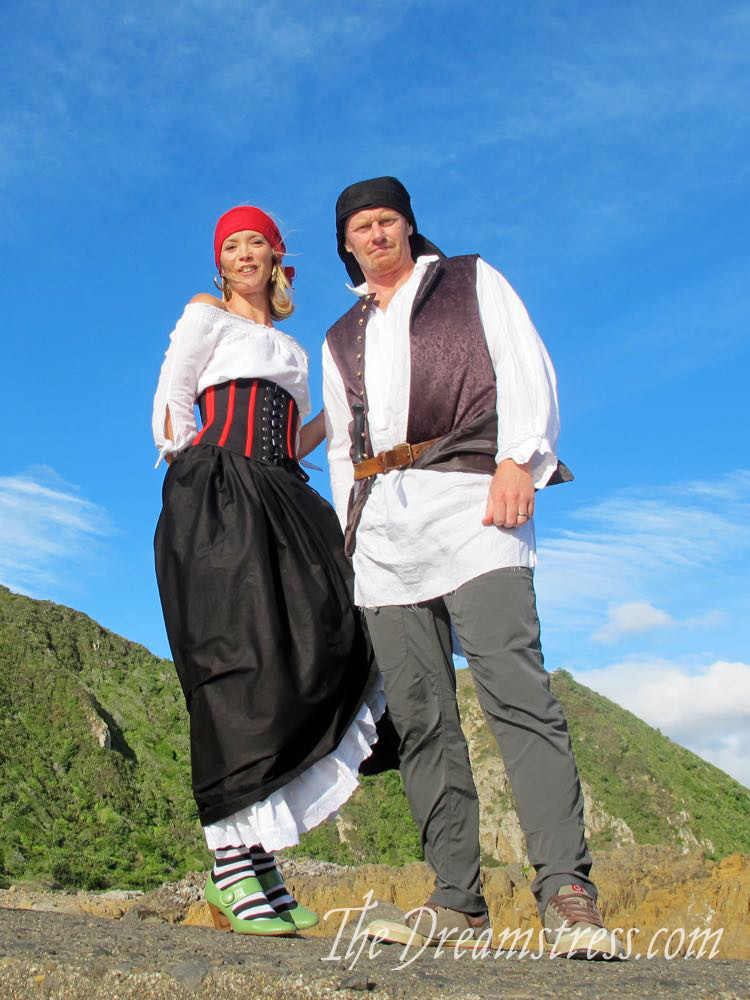
Madame O, as always, had the best feathers:
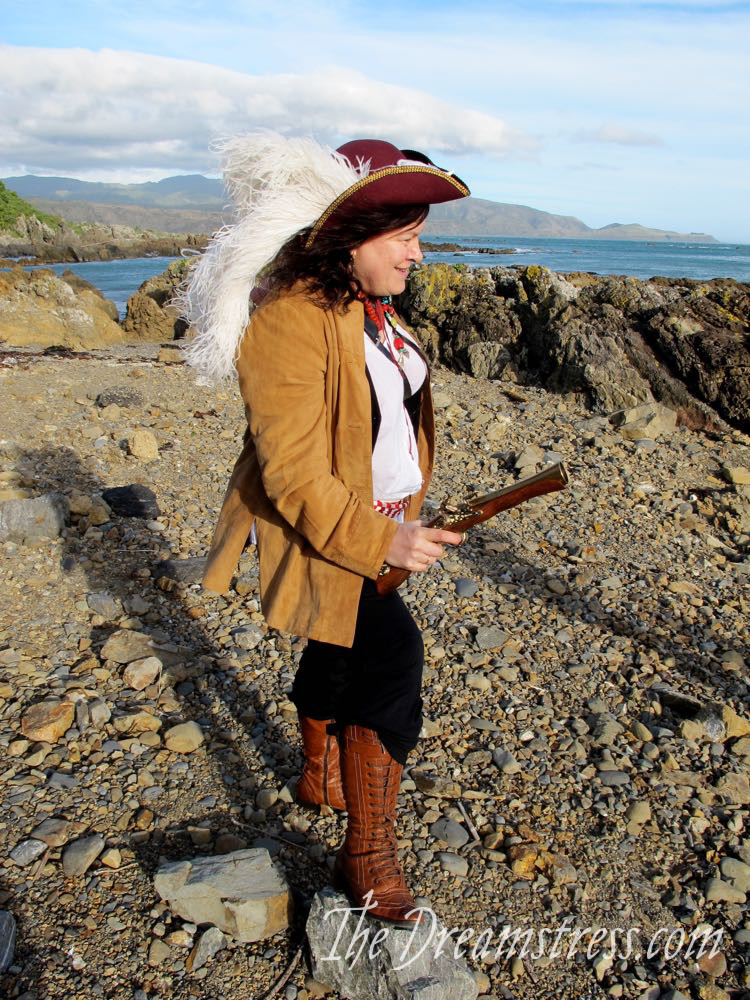
And there was even a baby pirate, who thoroughly enjoyed the Pirate-y antics:
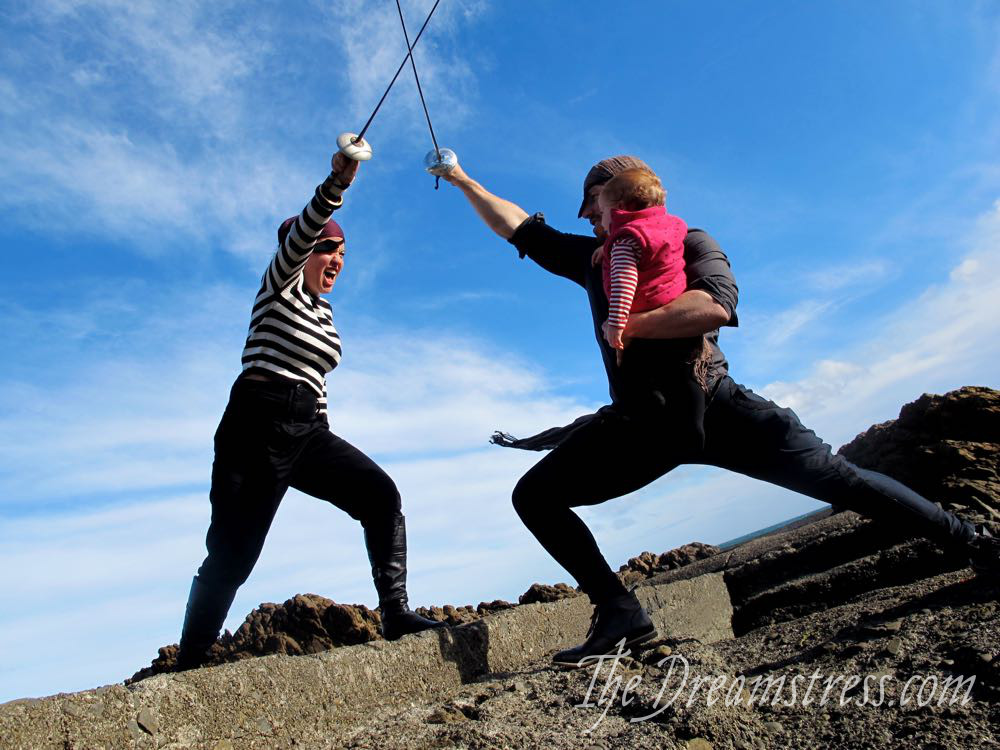
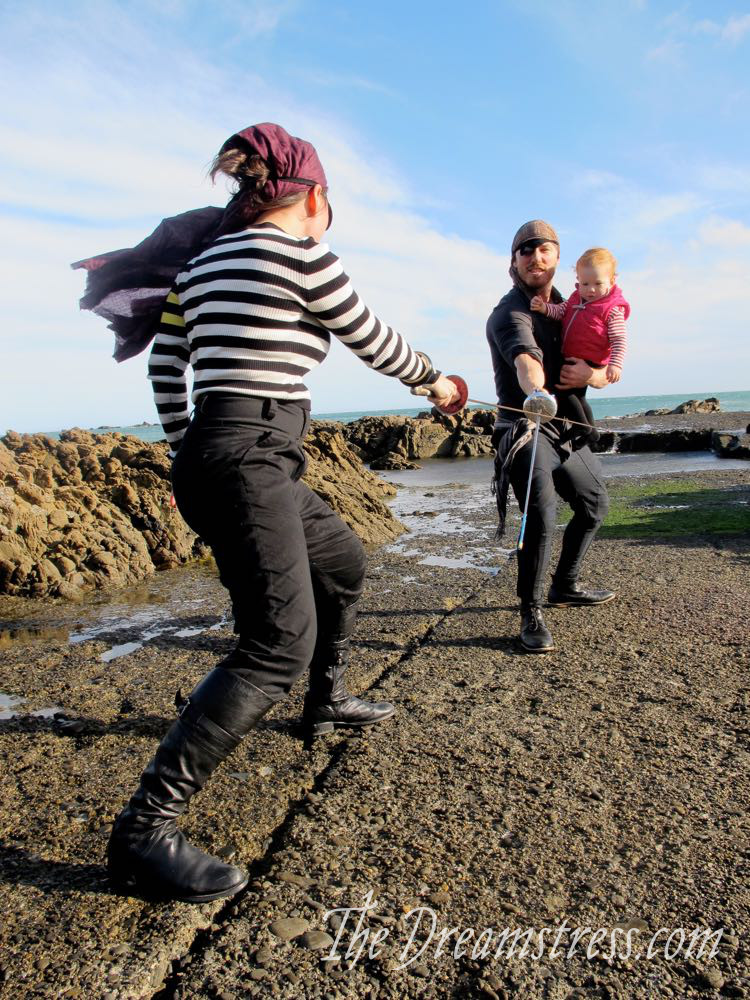
Much fun was had, and nobody had to walk the plank!



